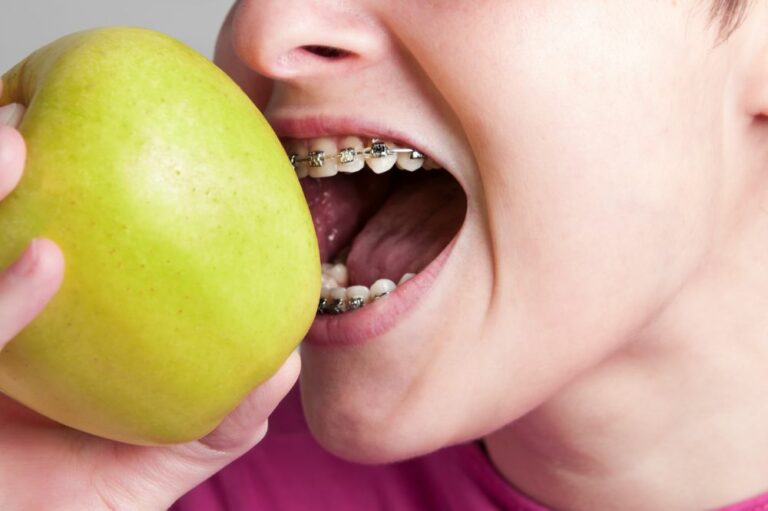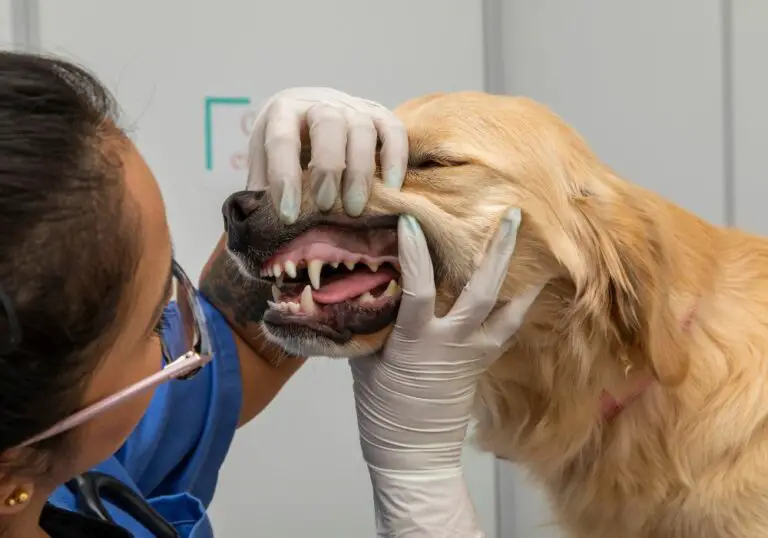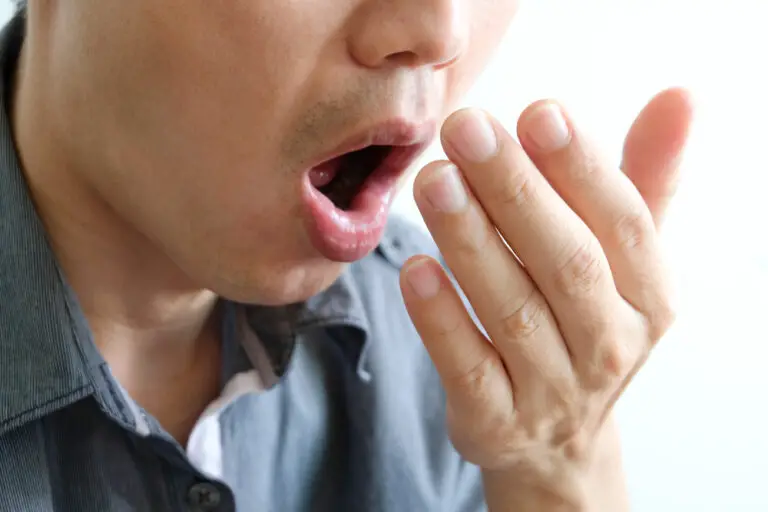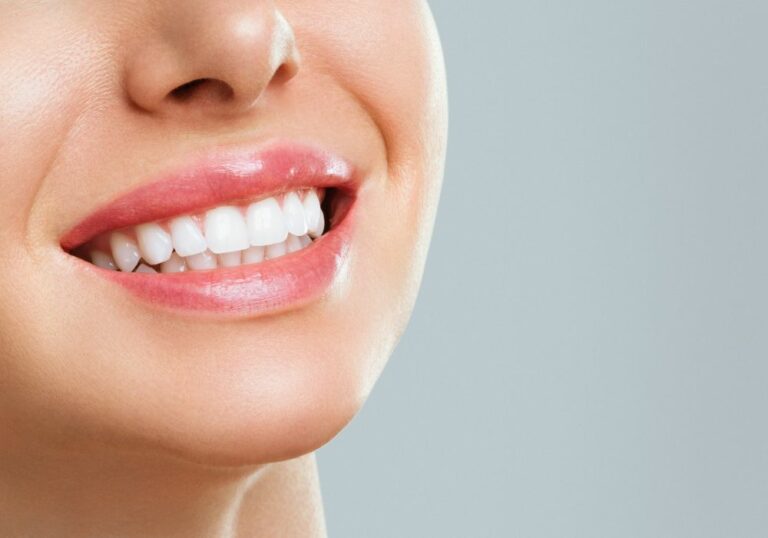When your baby starts to grow teeth while breastfeeding, it can be both exciting and challenging. On the one hand, it’s a milestone in your child’s development. On the other hand, it can be uncomfortable or even painful for you as a nursing mother. However, there’s no need to panic. With a few simple tips and tricks, you can continue to breastfeed your teething baby comfortably and safely.
One of the first things you should do when your baby gets teeth is to establish good oral hygiene habits. Wipe your baby’s gums and teeth with a piece of gauze or a damp cloth after feedings and before bedtime to help maintain good oral hygiene. Once your child has several teeth, start using water and a soft-bristled, child-size toothbrush for daily cleaning with a small smear of fluoridated toothpaste. This will help prevent tooth decay and other dental problems.
Another important tip is to pay attention and act fast when breastfeeding a baby with teeth. A teething baby may latch properly but then decide to move their tongue to bite down on the nipple. Many mothers are able to feel the change in the suction, and they know what’s coming after it happens the first time. To prevent this, make sure your baby is properly latched and try different breastfeeding positions to ensure that your baby’s weight is well supported when baby is latched on.
Understanding Baby Teething

Teething is a natural and normal process that every baby goes through. It is the time when your baby’s first set of teeth, also known as milk teeth, start to emerge from their gums. This usually happens between 6 and 12 months of age, but it can vary from baby to baby.
During teething, your baby may experience some discomfort and pain. This can cause them to be irritable, fussy, and have trouble sleeping. They may also drool more than usual and want to chew on everything they can get their hands on.
It is important to note that not all babies experience the same symptoms during teething. Some may have a harder time than others. If you are concerned about your baby’s teething symptoms, consult with your pediatrician.
Here are some common signs that your baby is teething:
- Increased drooling
- Chewing on everything
- Irritability and fussiness
- Trouble sleeping
- Swollen or tender gums
- Refusing food or breastfeeding
In the next section, we will discuss what you can do to help your baby during this time.
Recognizing Teething Signs
Teething is a natural process that all babies go through, usually starting between 4 and 7 months of age. One of the most common questions that breastfeeding mothers have is how teething affects breastfeeding. It’s important to know the signs of teething so that you can be prepared and help your baby through this process.
Here are some signs that your baby may be teething:
- Drooling: Teething can cause excessive drooling in babies, which can lead to skin irritation around the mouth and chin.
- Chewing: Your baby may start to chew on their hands, toys, or anything they can get their hands on to relieve the pressure on their gums.
- Fussiness: Teething can cause discomfort and pain, which can make your baby more irritable and fussy than usual.
- Sleep disturbances: Teething can disrupt your baby’s sleep patterns, making it harder for them to fall asleep or stay asleep.
- Changes in appetite: Some babies may eat less while teething due to the discomfort in their mouth.
It’s important to note that not all babies experience the same teething symptoms. Some babies may have no symptoms at all, while others may have all of the above symptoms. If you suspect that your baby is teething, take a look inside their mouth to see if their gums look red or swollen. This is a sure sign that a tooth is right under the surface and nearly ready to emerge.
In the next section, we’ll discuss how teething affects breastfeeding and what you can do to make breastfeeding more comfortable for both you and your baby.
Impacts on Breastfeeding

When your baby starts teething, it can impact your breastfeeding experience in a few ways. Here are some things to keep in mind:
Biting During Feeding
One of the most common concerns when babies start teething is that they may bite during feeding. This can be painful for the mother and cause anxiety about breastfeeding. However, it’s important to remember that biting is usually just a phase that babies go through and can be addressed with patience and positive reinforcement.
To prevent biting, make sure your baby is positioned correctly and is latched on properly. If you feel your baby starting to bite, gently remove them from the breast and say “no” in a firm but calm tone. You can also try offering a teething toy or cold washcloth before or after feeding to help soothe their gums.
Changes in Feeding Patterns
Teething can also cause changes in your baby’s feeding patterns. Some babies may nurse more frequently to help soothe their gums, while others may nurse less because they are uncomfortable or in pain.
If your baby is nursing less, it’s important to continue offering the breast regularly to maintain your milk supply. You can also try offering a bottle or cup of expressed milk or formula if your baby is still hungry but not interested in nursing.
On the other hand, if your baby is nursing more frequently, make sure you are staying hydrated and eating enough to support your milk supply. You may also want to try different breastfeeding positions to help your baby nurse comfortably.
Overall, teething can be a challenging time for both you and your baby, but with patience and support, you can continue to breastfeed successfully.
Soothing Teething Discomfort
When your baby starts teething, it can be a painful and uncomfortable experience. However, there are several things you can do to help soothe their discomfort. Here are a few options to consider:
Teething Toys
Teething toys are a great way to help your baby relieve their teething discomfort. There are many different types of teething toys available, including rubber toys, silicone toys, and wooden toys. Look for toys that are specifically designed for teething babies and are safe for them to chew on.
Cold Treatments
Cold treatments can also be helpful for soothing teething discomfort. You can try giving your baby a cold washcloth to chew on or a teething ring that has been chilled in the refrigerator. You can also try giving your baby cold foods, such as chilled applesauce or yogurt.
Teething Gels
Teething gels can help numb your baby’s gums and provide relief from teething discomfort. However, it’s important to use teething gels as directed and to avoid using them too often. Some teething gels contain benzocaine, which can be harmful to babies if used too much.
Remember to always supervise your baby while they are using teething toys or other teething remedies. If your baby’s teething discomfort persists or seems severe, be sure to consult with your pediatrician for additional advice and guidance.
Adjusting Breastfeeding Techniques

When your baby starts getting teeth, you may need to adjust your breastfeeding techniques to avoid discomfort and pain. Here are some tips to help you breastfeed your teething baby comfortably.
Feeding Position Changes
Changing your feeding position can help you avoid discomfort while breastfeeding your teething baby. Here are some positions you can try:
- Football Hold: This position can be helpful if your baby tends to bite while breastfeeding. In this position, you hold your baby under your arm like a football, with their head supported by your hand. This position can give you more control over your baby’s head movements and prevent them from biting.
- Side-Lying Position: This position can be comfortable for both you and your baby. Lie down on your side with your baby facing you, and support your baby’s head with your arm. This position can help you relax while breastfeeding and reduce the risk of biting.
- Cradle Hold: This is a classic breastfeeding position where you hold your baby in your arms with their head in the crook of your arm. This position can be comfortable for both you and your baby, but you may need to adjust your baby’s head position to avoid discomfort.
Latching Techniques
Adjusting your latching technique can also help you breastfeed your teething baby comfortably. Here are some tips:
- Ensure Proper Latch: A proper latch is essential to avoid discomfort while breastfeeding. Make sure your baby’s mouth is wide open and their lips are flanged out. Their tongue should be extended over their lower gum, and their chin should be touching your breast.
- Use Breastfeeding Aids: You can use breastfeeding aids like nipple shields or breast shells to protect your nipples from your baby’s teeth. These aids can also help your baby latch properly and reduce the risk of biting.
- Massage Gums: Massaging your baby’s gums before breastfeeding can help relieve teething pain and reduce the risk of biting. You can use a clean finger or a wet washcloth to massage your baby’s gums gently.
By adjusting your feeding position and latching technique, you can breastfeed your teething baby comfortably and avoid discomfort and pain.
When to Consult a Pediatrician

As a new parent, you may have several questions about breastfeeding your baby who has just started teething. It is important to know when to consult a pediatrician to ensure your baby’s health and wellbeing. Here are some situations where you should consider reaching out to your pediatrician:
1. Your baby is experiencing excessive pain
It is common for babies to experience some discomfort while teething, but if your baby is in excessive pain, it is important to seek medical attention. Signs of excessive pain include crying for extended periods, refusing to eat, and difficulty sleeping. Your pediatrician may recommend pain relief options such as teething gels or medication.
2. Your baby is not gaining weight
If your baby is not gaining weight or is losing weight, it may be a sign of breastfeeding difficulties. Teething can make it difficult for your baby to latch onto the breast, and this can affect their feeding. Your pediatrician may recommend consulting a lactation consultant or altering your breastfeeding technique to ensure your baby is getting enough milk.
3. Your baby has developed a fever
Teething can cause a slight increase in body temperature, but if your baby has a fever, it may be a sign of an infection. Contact your pediatrician if your baby has a fever of 100.4°F (38°C) or higher. Your pediatrician may recommend further evaluation and treatment.
4. Your baby has developed a rash
Teething can cause drooling, which can lead to a rash around your baby’s mouth and chin. While this is common, if the rash is severe or does not go away, it is important to consult your pediatrician. Your pediatrician may recommend creams or ointments to soothe the rash.
In conclusion, while teething is a natural process, it is important to know when to seek medical attention. Contact your pediatrician if your baby is experiencing excessive pain, not gaining weight, has developed a fever, or has a rash. Your pediatrician can provide guidance and support to ensure your baby’s health and wellbeing.
Frequently Asked Questions
How can I help my breastfed baby during teething?
Teething can be a painful experience for babies, and it may make breastfeeding uncomfortable for both you and your little one. To help ease your baby’s discomfort, you can try giving them a cold, wet washcloth or a cold teething toy to chew on. You can also massage their gums with a clean finger before breastfeeding. Some parents find that changing breastfeeding positions can also help, as it can relieve pressure on sore gums.
What are some signs of teething in breastfed babies?
Some signs that your breastfed baby may be teething include drooling, fussiness, irritability, and difficulty sleeping. Your baby may also start to chew on their hands or toys more than usual. Some babies may even refuse to breastfeed due to the discomfort of teething.
Is it safe to breastfeed when the baby has teeth?
Yes, it is safe to breastfeed when your baby has teeth. In fact, breastfeeding can provide comfort and relief for teething babies. However, it is important to be aware that your baby’s teeth can potentially cause discomfort or even pain while breastfeeding. If you experience pain or discomfort while breastfeeding, try adjusting your baby’s position or using a nipple shield.
What are some alternatives to breastfeeding during teething?
If your baby is experiencing discomfort while breastfeeding, you may want to consider offering them a bottle or a cup instead. You can also try offering your baby soft foods or purees to help soothe their gums. However, it is important to continue offering breast milk or formula to ensure that your baby is getting the nutrition they need.
How can I prevent tooth decay in my breastfed baby?
To prevent tooth decay in your breastfed baby, it is important to practice good oral hygiene. You can start by wiping your baby’s gums with a clean, damp cloth after feedings. Once your baby’s teeth start to come in, you can begin brushing them with a soft-bristled toothbrush and a small amount of fluoride toothpaste. It is also important to limit sugary foods and drinks, as they can contribute to tooth decay.
How often should I brush my baby’s teeth during teething?
You should brush your baby’s teeth twice a day, using a small amount of fluoride toothpaste. It is important to use a soft-bristled toothbrush and to brush gently, as your baby’s gums may be sensitive during teething. You can also offer your baby water to drink after feedings to help rinse away any milk or formula that may be on their teeth.







